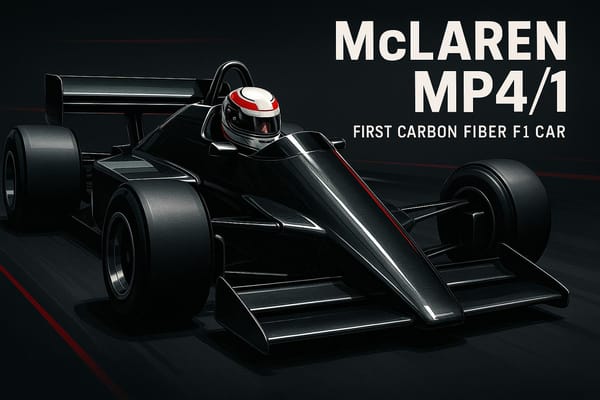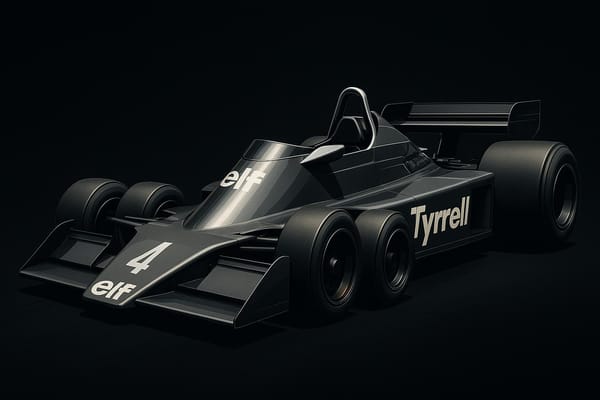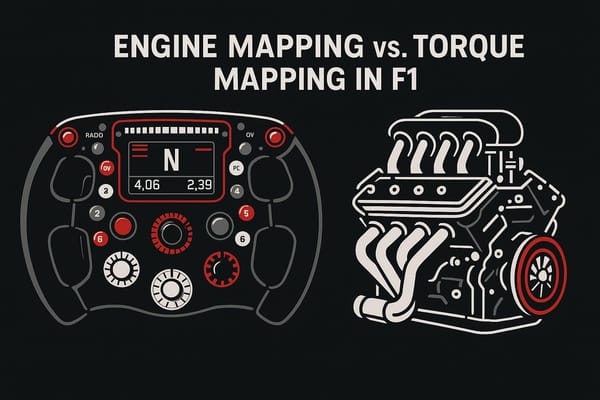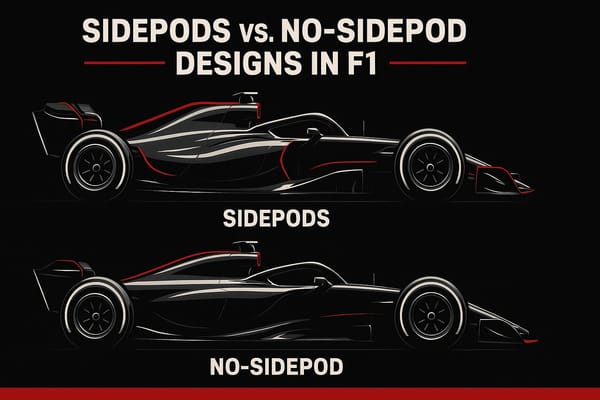Suzuka’s Legacy: How Japan’s Iconic Figure-8 Circuit Became a Driver Favourite
Explore Suzuka Circuit's unique figure-8 layout, its engineering challenges, and the unforgettable moments that define its legacy in Formula 1.
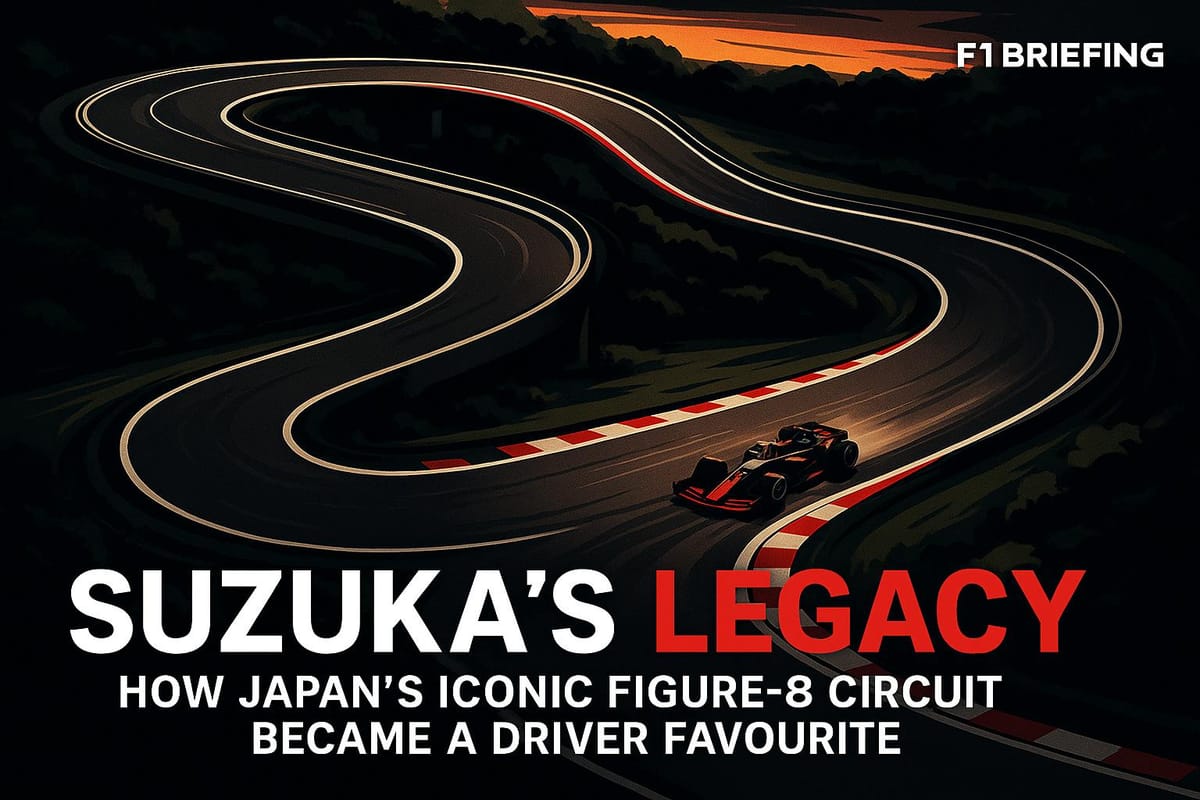
Suzuka Circuit is one of Formula 1's most beloved and challenging tracks, known for its unique figure-8 layout, technical corners, and rich history. Built in 1962 as a Honda test track, Suzuka evolved into a premier F1 venue by 1987, hosting legendary moments like Senna vs. Prost and Schumacher’s 2000 triumph. Drivers praise its thrilling design, featuring high-speed sections, dramatic elevation changes, and iconic corners like the S-Curves and 130R. With a capacity of 155,000 fans and unpredictable weather adding to the excitement, Suzuka is both a test of skill and a fan favorite, embodying the spirit of motorsport.
- Unique Layout: Figure-8 design with 18 turns and 40.4 meters of elevation change.
- Driver Challenges: High G-forces (up to 5G), precise cornering, and demanding mental focus.
- Historic Moments: Senna-Prost rivalry, Schumacher’s 2000 title, and Räikkönen’s 2005 comeback.
- Fan Atmosphere: Passionate, knowledgeable fans create a unique and electrifying environment.
- Safety Updates: Recent innovations include advanced circuit mapping and improved barriers.
Suzuka remains a masterpiece of engineering and racing, blending tradition with modern F1 demands.
Suzuka Circuit - The Stunning Story Behind Japan’s Iconic F1 Track!

Engineering and Design Elements
Suzuka Circuit is a masterpiece of engineering and design, pushing both cars and drivers to their absolute limits. The track's layout demands a seamless blend of machine performance and driver expertise. Every twist and turn of Suzuka builds on its legendary reputation, creating a racing experience like no other.
The Bridge and Elevation Design
One of Suzuka's standout features is its figure‑8 layout, which includes an overpass where the back straight crosses over the front section. This unique design incorporates significant elevation changes, making it a rarity among FIA Grade 1 tracks. These altitude shifts aren't just for show - they introduce aerodynamic challenges that test the cars' stability and the drivers' adaptability.
Major Corner Analysis: S‑Curves to Spoon
Suzuka's technical brilliance is most evident in its iconic corners. The S‑Curves, also known as the Snake, demand precision as drivers navigate them at speeds of up to 130 mph. BBC F1 technical analyst Gary Anderson highlights their difficulty:
"The fast Esses at the start of the lap after Turns One and Two are especially difficult - very, very quick and demanding."
Another highlight is the 130R corner, where drivers face lateral G-forces of up to 3.5G while reaching speeds as high as 190 mph. Jonathan Rea sums up the thrill of Suzuka perfectly:
"Honestly, it's one of the best tracks in the world. It's got so many cool elements as a track, and when you string them together and do a good lap time, there's no better buzz."
These corners are more than just technical challenges - they embody the spirit of Suzuka, offering a mix of exhilaration and risk that few tracks can match.
Safety Updates Through the Years
Despite its demanding nature, Suzuka has made significant strides in safety without compromising its character. In April 2025, the FIA introduced a cutting-edge circuit mapping system designed to minimize safety car interventions. Key features of this system include:
- Fluorescent orange barrier markings
- Strategically placed exclamation mark signs
- Designated safe stopping zones
- Integration with team pitwall software
In addition, the track surface has been improved with targeted resurfacing and better drainage at critical corners. Carlos Sainz captures the essence of Suzuka's balance between challenge and safety:
"One of my favourite tracks for sure, the narrowness makes it challenging. The fact that if you put a wheel off the track, it's grass or gravel and penalises the driver."
Major Racing Moments at Suzuka
The Suzuka Circuit has been the backdrop for some of Formula One's most unforgettable moments. Known for its demanding layout, the track has tested the limits of drivers and produced races that have defined careers and championships. Let’s dive into a few iconic events that showcase Suzuka's unique challenges.
Senna vs. Prost: The 1989-1990 Rivalry
The rivalry between Ayrton Senna and Alain Prost reached its boiling point at Suzuka, with two consecutive years of championship-deciding drama. In 1989, Senna showcased blistering speed, outqualifying Prost by an astonishing 1.7 seconds. However, the race ended in controversy when the two collided at the chicane. Senna was disqualified, fined $100,000, and handed a six-month suspended ban.
The tension carried over to 1990. Still reeling from the events of the previous year, Senna expressed his frustration:
"I think what happened in 1989 was unforgivable, and I will never forget it. I still struggle to cope with it even now."
In a dramatic twist, the 1990 race saw another collision - this time at the first corner - which took Prost out of the race and handed the championship to Senna. Reflecting on the incident, Senna admitted:
"I didn't care if we crashed; I went for it. And he took a chance, turned in, and we crashed. It was building up, it was inevitable. It had to happen."
Schumacher's Triumph in 2000
Michael Schumacher’s win at Suzuka in 2000 was a monumental moment, ending Ferrari's 21-year drought for a drivers' championship. The race was fiercely competitive, with Schumacher clinching pole position by a razor-thin margin of 0.009 seconds over Mika Häkkinen.
Looking back on that day, Schumacher said:
"Looking back, I have to say that this race was something very special for me. Not only because it brought me the title, but also because it was such a high-class race. It really was racing at its top level."
He added:
"It is like when you are a fan of a football team and they win the Cup. I really felt something special and I am really pleased for all of them at Ferrari."
This victory wasn’t just a personal triumph for Schumacher but also a moment of redemption for Ferrari, making it one of the most celebrated wins in the sport's history.
Räikkönen’s Incredible Comeback (2005)
Suzuka has also been the stage for one of Formula One’s greatest comebacks. In 2005, Kimi Räikkönen started 17th on the grid after a rain-affected qualifying session. Undeterred, he charged through the field, gaining roughly a second per lap on race leader Giancarlo Fisichella in the closing stages. The race also featured Fernando Alonso’s daring pass on Michael Schumacher at 130R, hitting speeds of 208 mph.
McLaren’s team principal Ron Dennis described the victory as:
"One of the best team wins we've ever had."
Räikkönen reflected on the achievement:
"I think that was one of my best races ever with a lot of hard work, and I really enjoyed myself. Considering all the problems we have had here to come away with a win is just fantastic."
This race marked McLaren's last win until the 2007 Malaysian Grand Prix.
These unforgettable moments underline Suzuka’s reputation as a track that combines high-speed danger with technical mastery, pushing drivers to their absolute limits.
Track Demands on F1 Drivers
Suzuka isn't just a test of engineering - it’s a grueling challenge for drivers, pushing their physical and mental limits like few other circuits in Formula One.
G-Forces and Driving Precision
At Suzuka, drivers face a relentless combination of high-speed corners and dramatic elevation changes. In the first sector alone, they endure forces reaching up to 5G. To put that into perspective, a driver weighing 154 lbs feels a crushing force equivalent to 770 lbs pressing down on them. The Esses (Turns 3–7) are particularly unforgiving, requiring drivers to maintain sixth gear at speeds exceeding 124 mph. Every twitch of the steering wheel and adjustment of the throttle must be executed with razor-sharp precision.
Race Management and Focus
Racing at Suzuka demands more than just skill behind the wheel - it requires sharp mental focus and strategic thinking. The circuit's traditional layout forces drivers to find the perfect balance between aggressive driving and managing tire wear and energy use. When rain enters the equation, the difficulty skyrockets. Reduced grip and unpredictable water levels turn the already tricky track into an even more formidable challenge.
Pedro de la Rosa, a former F1 driver, captured the intensity of the track perfectly:
"You hardly breathe in the first half of the lap and that's where the laptime is made."
- Pedro de la Rosa
What Drivers Say About Suzuka
Suzuka’s reputation as a driver’s circuit is well-earned, with its unforgiving design and unique features drawing admiration from F1 legends.
"It's an old-school circuit, so there's no room for error. It's narrow, there are gravel traps everywhere, and as a driver you know that if you make one mistake you could be off, but that makes it even more exciting to drive."
- Pedro de la Rosa
Lewis Hamilton, a seven-time world champion, has likened driving at Suzuka to "the best rollercoaster ride that I've felt in a Formula 1 car". The iconic 130R corner is a prime example of what makes the circuit so thrilling. In dry conditions, it’s a test of nerve and precision; in wet weather, it becomes even more perilous. This combination of physical strain, technical mastery, and sheer bravery cements Suzuka’s status as a true test of a driver’s mettle.
Suzuka's Impact on F1
Japanese Motorsport Heritage
Suzuka isn’t just a racetrack; it’s a testament to Japan’s passion for motorsport and Honda’s bold vision for innovation. When Honda set out to create this iconic circuit, their determination was summed up in a simple yet daring statement:
"Tell me where you want the track, and we'll sort it out."
Designed by John Hugenholtz, Suzuka has grown into a cornerstone of Japanese motorsport. Over the years, it has hosted not only Formula One but also prestigious events like the Super GT series and the Suzuka 8 Hours. This blend of history and cutting-edge competition ensures the track remains a vital part of racing culture, where the old meets the new in thrilling harmony.
Track Atmosphere and Spectator Experience
What sets Suzuka apart from other Formula One venues is the electric atmosphere created by its fans. Their enthusiasm is palpable, yet their respect for the sport adds a unique charm. Ayao Komatsu, Team Principal of Haas F1, captures the essence of this fan culture:
"The fans just know a lot about the sport, and the fact they make so much effort dressing up and putting rear wings on helmets etc, it just creates a very special atmosphere – it's unique."
For Japanese driver Yuki Tsunoda, Suzuka holds a deeply personal significance:
"Normally I don't feel like I'm a Japanese driver when I'm living outside of Japan and travelling, but I go to Suzuka and feel the support from the fans and see it in their eyes – I think 'ah, I'm a Japanese driver!' and I'm honoured to be. It feels like coming home."
The fans’ creativity knows no bounds, from intricate costumes to imaginative helmet designs. Their passion extends beyond national pride, as they cheer just as fervently for every driver on the podium. Adding to the drama is Suzuka’s unpredictable weather, which keeps teams and spectators on edge throughout the weekend.
Weather Effects on Race Strategy
Suzuka’s unique challenges don’t stop with its fans or its layout; the weather plays a starring role in shaping race outcomes. The track’s location is notorious for sudden weather changes, forcing teams to stay sharp and flexible with their strategies. In 2024, a sudden downpour turned a planned two-stop strategy into a red-flagged event. Just a year later, in 2025, similarly erratic conditions pushed teams to rethink their tactics mid-race.
These unpredictable elements, combined with Suzuka’s tight run-off areas, create a high-stakes environment. Teams must strike a delicate balance between aggressive racing and careful tire management, especially when rain enters the equation. It’s this mix of history, fan passion, and strategic complexity that cements Suzuka’s place as one of Formula One’s most iconic circuits.
Conclusion: Suzuka's Place in F1
Suzuka's iconic 5.8-km figure-eight layout, with its 18 distinct turns, continues to push the limits of the world's top drivers. Its reputation as one of the most technically demanding tracks is highlighted by Max Verstappen, who once remarked:
"It's one of these last old-school tracks that when you make a mistake, and you go off, you are really off!"
What sets Suzuka apart is its ability to combine technical complexity with an emotional connection, evident in its consistently high attendance and its secured spot on the F1 calendar through 2029. Carlos Sainz summed up its allure perfectly:
"It's the fact that it's an old school track that penalises a driver if you do our mistake, but the flow it has, every single corner is different, every single place you're on the limit, playing with the white lines, the grass, the gravel. And the circuit itself is a piece of art"
From its beginnings as a Honda test track to becoming an integral part of Formula One, Suzuka embodies the essence of motorsport. Its evolution mirrors the growth of F1 itself, blending tradition with modernity. Max Verstappen's 2025 lap record of 1:26.983 is a testament to the track's enduring challenge, reinforcing its status as one of the sport's most celebrated venues. Suzuka is more than just a circuit - it's a masterpiece that continues to define the spirit of Formula One.
FAQs
Why is Suzuka Circuit's figure-8 layout so special in Formula 1?
Suzuka Circuit is famous for its one-of-a-kind figure-8 layout, where the track cleverly crosses over itself using a bridge. This design blends high-speed straights, tricky corners, and dramatic elevation changes, creating a thrilling experience for drivers.
Some of its standout features include the legendary 130R, a high-speed curve that pushes cars and drivers to their limits, and the challenging S-curves, which demand razor-sharp precision and control. With its tough layout and storied past, Suzuka has earned its place as a favorite among F1 drivers and fans around the world.
How has Suzuka Circuit improved safety features to meet modern F1 standards?
Suzuka Circuit's Safety Upgrades
Over the years, Suzuka Circuit has seen numerous changes to meet the evolving safety standards of Formula 1. Back in 1983, a chicane was added before the final corner to help reduce speeds. During the 1980s, key sections like Spoon and Degner received expanded run-off areas to provide more room for error. Fast forward to 2002, the high-speed 130R corner underwent a redesign, transforming it into a smoother curve with larger run-off zones. A new chicane was also introduced that year to further enhance safety.
More recently, attention has shifted to improving the track’s infrastructure. Upgrades have included better drainage systems, resurfacing the track, and implementing stricter enforcement of track limits. In addition, measures like steel skid blocks are being considered to address risks such as fires caused by sparks igniting dry grass. These ongoing updates ensure Suzuka remains a thrilling yet safe challenge for drivers, all while preserving its legendary status in motorsport.
Why do F1 drivers love Suzuka Circuit despite its tough and technical layout?
Why F1 Drivers Love Suzuka Circuit
F1 drivers hold Suzuka Circuit in high regard, thanks to its distinctive and demanding design. The track’s famous figure-eight layout features legendary corners like the S-curves and the high-speed 130R, both of which test a driver’s precision, skill, and nerve. With its mix of fast straights and intricate technical turns, Suzuka offers an exhilarating challenge that rewards those who can truly master it.
But it’s not just the layout that makes Suzuka special - it’s the history and atmosphere. This circuit has been the stage for some of Formula 1’s most memorable races and decisive championship battles. Its rich legacy and electrifying vibe make it a favorite among drivers, capturing the perfect balance of difficulty and adrenaline that defines the spirit of Formula 1.
Related posts
- Track by Track: The Complete Story of the 2025 Formula 1 Calendar
- Imola’s Resurrection: From Tragedy to Triumph at the Emilia Romagna Grand Prix Circuit
- Monaco Grand Prix Circuit Guide: The Prestige, Precision, and Pressure of F1’s Crown Jewel
- Shanghai International Circuit: A Technical Masterpiece Behind the Chinese Grand Prix

